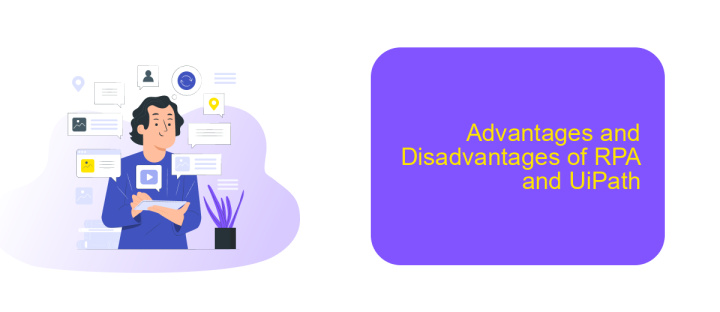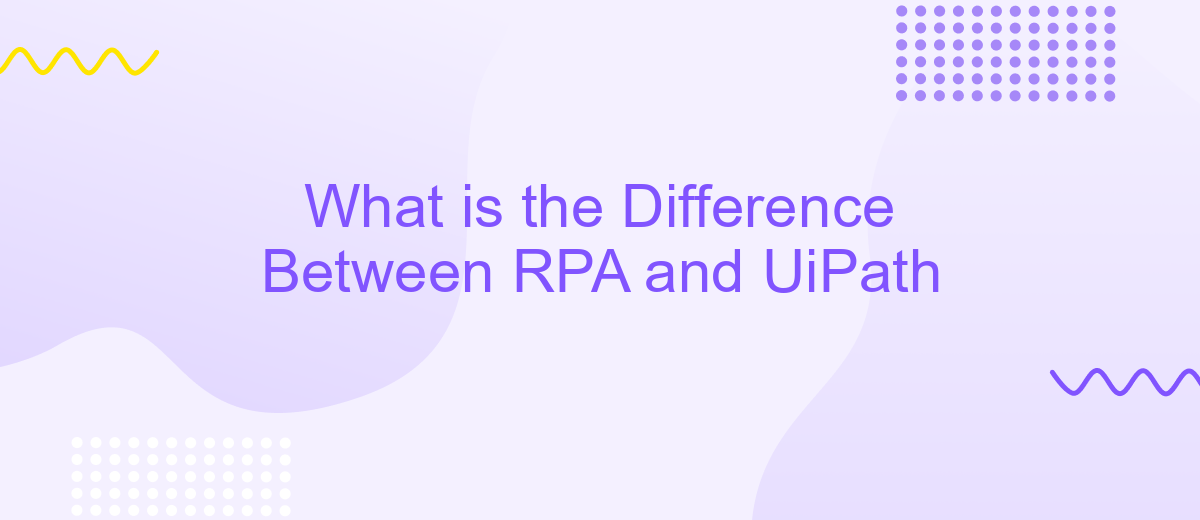What is the Difference Between RPA and UiPath
Robotic Process Automation (RPA) and UiPath are often mentioned together in discussions about automation, but they are not the same. RPA is a technology that automates repetitive tasks, whereas UiPath is a leading software platform that enables the implementation of RPA solutions. Understanding the distinction between the two is crucial for businesses looking to streamline their operations.
Introduction
Robotic Process Automation (RPA) and UiPath are two terms often used interchangeably, but they represent distinct concepts in the automation landscape. RPA is a technology that allows businesses to automate repetitive tasks by mimicking human actions, while UiPath is a leading software platform specifically designed for implementing RPA solutions. Understanding the differences between these two is crucial for businesses looking to streamline operations and improve efficiency.
- RPA: A technology for automating repetitive tasks.
- UiPath: A software platform for developing RPA solutions.
- Integration Tools: Services like ApiX-Drive facilitate seamless integration between various applications and RPA tools.
While RPA provides the foundational technology for automation, UiPath offers a comprehensive suite of tools to develop, deploy, and manage RPA projects. Additionally, services like ApiX-Drive play a pivotal role in integrating different applications, ensuring that automated workflows are smooth and efficient. By leveraging these technologies, businesses can significantly reduce manual effort and enhance productivity.
Definition of RPA and UiPath

Robotic Process Automation (RPA) is a technology that allows organizations to automate repetitive tasks and processes by using software robots. These robots can mimic human actions such as data entry, transaction processing, and responding to simple customer queries. RPA aims to improve efficiency, reduce errors, and free up human workers for more complex tasks. It is widely used across various industries to streamline operations and improve productivity.
UiPath, on the other hand, is a leading software platform specifically designed for RPA. It provides tools to design, deploy, and manage software robots that automate business processes. UiPath offers a user-friendly interface and a range of features that make it accessible for both technical and non-technical users. Additionally, UiPath integrates with various services and platforms, including ApiX-Drive, which helps in setting up integrations effortlessly. This makes UiPath a versatile solution for businesses looking to implement RPA effectively.
Key Differences Between RPA and UiPath

Robotic Process Automation (RPA) and UiPath are often mentioned together, but they serve different purposes in the automation ecosystem. Understanding their key differences is crucial for selecting the right tool for your business needs.
- Scope: RPA is a broad technology used to automate repetitive tasks across various platforms, while UiPath is a specific RPA tool designed to facilitate this automation.
- Functionality: RPA encompasses multiple tools and technologies for automation, whereas UiPath provides a comprehensive suite including design, management, and monitoring capabilities.
- Integration: RPA solutions often require complex integrations with other systems. UiPath simplifies this with built-in connectors and services like ApiX-Drive, which streamline the integration process.
- Usability: RPA tools can vary in user-friendliness, but UiPath is known for its intuitive interface and user-centric design, making it accessible even for non-technical users.
- Customization: RPA offers flexibility through various scripting languages, while UiPath provides extensive customization options within its platform, including drag-and-drop features.
In summary, while RPA is a general approach to automating business processes, UiPath is a specialized tool within this domain, offering a user-friendly and integrated solution. Understanding these distinctions can help you choose the right approach for your automation strategy.
Advantages and Disadvantages of RPA and UiPath

Robotic Process Automation (RPA) and UiPath offer significant benefits for automating repetitive tasks, improving efficiency, and reducing human error. RPA, as a technology, allows businesses to automate rule-based processes across various applications, while UiPath provides a comprehensive platform to implement RPA solutions with ease.
However, both RPA and UiPath come with their own set of advantages and disadvantages. Understanding these can help businesses make informed decisions when choosing the right automation tool for their needs.
- Advantages of RPA: Cost savings, increased accuracy, and scalability.
- Disadvantages of RPA: High initial setup costs and complexity in handling unstructured data.
- Advantages of UiPath: User-friendly interface, extensive community support, and seamless integration with tools like ApiX-Drive.
- Disadvantages of UiPath: Licensing costs and potential over-reliance on the platform.
In conclusion, while RPA and UiPath offer powerful tools for automation, it is crucial to weigh their pros and cons. By leveraging services like ApiX-Drive, businesses can enhance their automation capabilities and streamline integrations, ensuring a more efficient and productive workflow.
Conclusion
In summary, while RPA (Robotic Process Automation) is a broad technology that focuses on automating repetitive tasks across various software applications, UiPath is a specific tool within the RPA spectrum that provides a comprehensive platform for developing, deploying, and managing automation workflows. RPA offers the foundational capabilities to streamline operations, whereas UiPath enhances these capabilities with user-friendly interfaces, extensive integrations, and advanced features like AI and machine learning.
Moreover, for businesses looking to further streamline their automation processes, integrating tools like ApiX-Drive can be highly beneficial. ApiX-Drive facilitates seamless integration between different software applications, enabling smoother data flow and more efficient automation. By leveraging such services, organizations can maximize the potential of their RPA implementations, ensuring that their automation strategies are both effective and scalable.


FAQ
What is RPA?
What is UiPath?
How is RPA different from UiPath?
Can RPA be integrated with other systems?
What are the benefits of using UiPath for RPA?
Apix-Drive is a universal tool that will quickly streamline any workflow, freeing you from routine and possible financial losses. Try ApiX-Drive in action and see how useful it is for you personally. In the meantime, when you are setting up connections between systems, think about where you are investing your free time, because now you will have much more of it.

